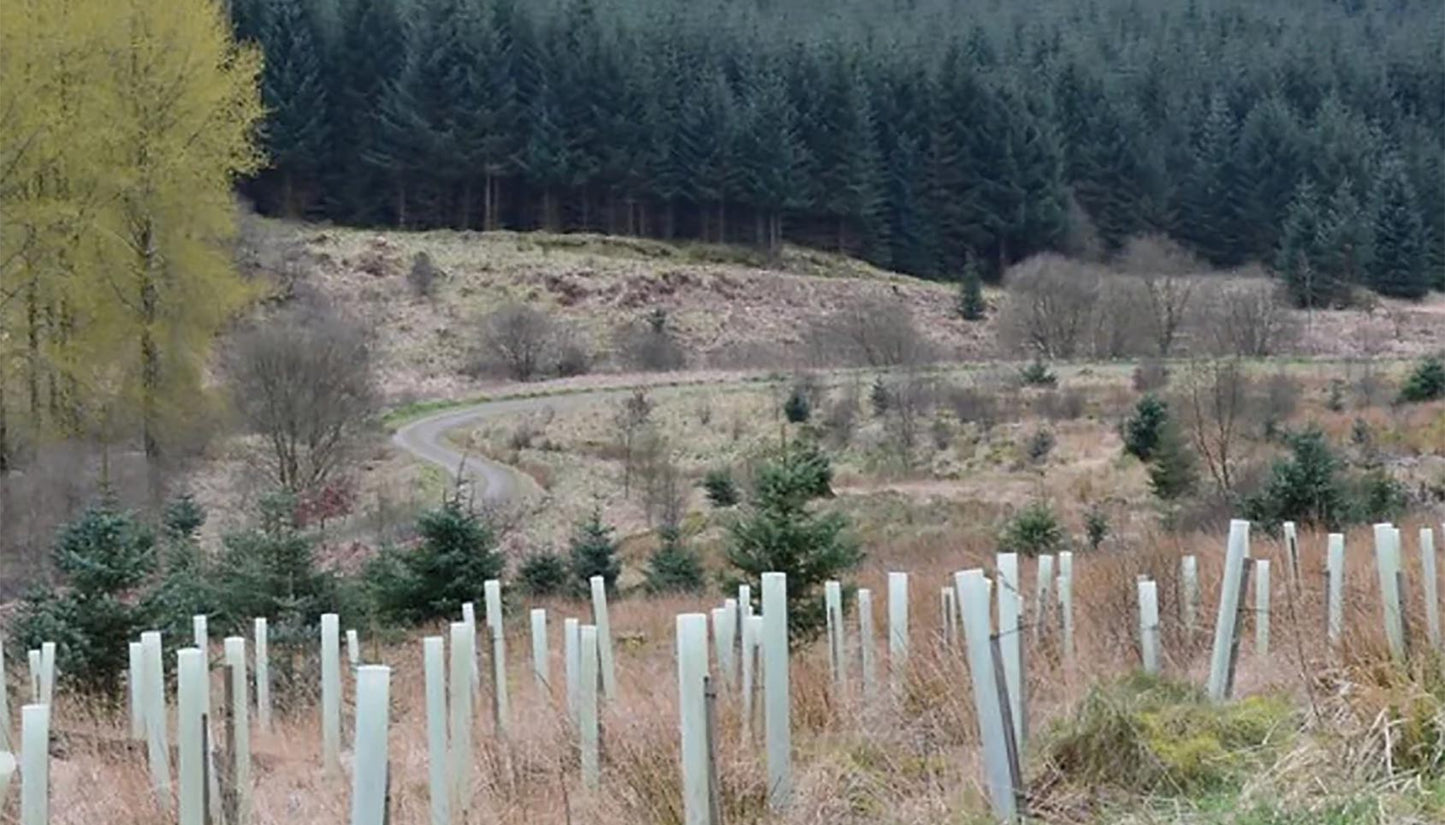We source our chicken from one farm in Leicestershire. The farm is Pasture for Life certified and rears truly free range, outdoor birds.

We often hear the argument that land that is being used to graze could be put to better use by planting trees and capturing carbon in the fight against rising atmospheric CO2 levels but is this really the case?
Two points:
a. Globally, more carbon is stored in soil than in all the Earth’s plants and the atmosphere combined.
b. Animals play a vital role in the creation and regeneration of new soil.
Perhaps we need more grazing, not less?
A recent study illustrates this:
'In the Scottish moorlands, plots planted with trees stored less carbon than untouched lands. A study by Liz Kimbrough published 18th August 2020.
Some findings:
- In the Scottish moorlands, experimental areas planted with native trees actually stored less carbon after several decades than untouched plots covered in heather.
- These results are of direct relevance to current policies that promote tree planting under the logic that trees remove carbon from the atmosphere and lock it in their biomass as they grow. This is true, but disregards the role of soil.
- Globally, more carbon is stored in soil than in all the Earth’s plants and the atmosphere combined.
- Planting trees in areas that have never been forested, a practice known as afforestation, can release these carbon stores, resulting in a net loss of carbon from the ecosystem.
The detail:
Trees capture carbon, produce oxygen, and run on sunlight. So when it comes to fighting climate change, the more trees the better ? This isn’t always the case.
In the Scottish moorlands, experimental areas planted with trees actually stored less carbon after several decades than untouched plots covered in heather (Calluna vulgaris), according to a study recently published in the journal Global Change Biology.
“It was counterintuitive that in some cases, planting trees can have the opposite effect to what we’ve been taught in school and actually leads to a loss of carbon from the ecosystem rather than sequestering it,” Nina Friggens, lead author of the study and current postdoctoral fellow at the University of Exeter.
Researchers planted stands of native birch trees (Betula pubescens) in experimental plots 39 years ago and plots of birch and pine (Pinus sylvestris) 12 years ago. In 2017 and 2018, experts from the University of Stirling and the James Hutton Institute made use of these long-term experiments, measuring the accumulated carbon storage above ground (in the trees) versus below ground (in the soil). They compared plots with trees to undisturbed plots without trees.
Plots with trees had lower stored carbon (soil organic carbon) and greater soil respiration (carbon released into the atmosphere) than the unaltered control plots covered in the shrubby heather. The lack of carbon below ground canceled out the carbon stored in the trees above ground, resulting in no net gain in carbon storage in the tree-planted ecosystems.
These results, the paper states, are of direct relevance to current policies, such as the Paris Agreement and Bonn Challenge, which promote tree planting under the logic that trees remove carbon from the atmosphere and lock it in their biomass as they grow. But planting trees in areas that have never been forested, a practice known as afforestation, can release carbon stores, resulting in a net loss of carbon from the ecosystem.
“This is one more paper on a growing stack of literature that suggests that indiscriminate tree planting is not one of the best nature-based climate solutions,” Jennifer S. Powers, a professor in the ecology and plant biology departments at the University of Minnesota.
“If you really want to stuff carbon into a pool that has long term storage potential that’s below ground carbon and not biomass [plant] carbon,” Powers said.
Carbon in soil builds up over millennia. It enters the soil through decomposing plant matter or through the roots of living plants. Some of this carbon is decomposed by microorganisms and released back into the atmosphere as CO2, in a process known as respiration. Some of the carbon is stabilised and protected chemically or physically. This protected carbon builds up as a long-term carbon pool or “carbon stocks.”
These protected soil carbon stocks are very stable if undisturbed, and tree planting can be a disturbance. The physical act of planting and the input of fresh organic matter from the new trees can change the microbial community below ground, priming the soil and making the microbes “hungrier” for more organic matter. In this new system, microbes may turn to the stocks of older, stable organic matter to feed.
Researchers involved in the experiment think soil priming may be one of the carbon culprits in this case. Tree planting, they hypothesise, dramatically altered the underground mycorrhizal (symbiotic fungal) communities, resulting in a net loss of carbon.
“Soil carbon is just fascinating,” Powers said. “I always think of it as sort of magic … this massive pool of carbon that turns over at timescales from millennia to fifteen minutes … It’s just this sort of endlessly fascinating, complex system that is vitally important for understanding what’s going on with climate change.”
Globally, more carbon is stored in the soil than in all the Earth’s plants and the atmosphere combined. A large percentage of these soil carbon stocks are stored at high latitudes. These cold, often wet climates are low-energy systems that tend to limit decomposition and slow down microbial processes, much like a refrigerator. In terms of carbon cycling, these systems turn over very slowly - not a lot of carbon goes in, but not a lot of carbon comes out either.
In contrast, the carbon in vegetation is relatively short-lived and transient, stored only for the life span of the trees. And as climate change worsens, forest permanence, the idea that forests will persist for decades or centuries, is threatened.
The focus on tree planting also diverts attention away from what, according to Friggens, should be our top priority: reducing emissions. Still, she says, there are multiple benefits to forests that outweigh or are different from the carbon and climate angle, such as providing habitat and protecting biodiversity.
“We’re not trying to say that tree planting doesn’t work, but we didn’t find it to be particularly beneficial over a 40-year time period in these specific sites,” Friggens said. “In terms of trees for carbon, we need to be careful where and what we plant. That’s kind of the take-home message.”
Citation:
Friggens, N. L., Hester, A. J., Mitchell, R. J., Parker, T. C., Subke, J. A., & Wookey, P. A. (2020). Tree planting in organic soils does not result in net carbon sequestration on decadal timescales. Global Change Biology, 26(9), 5178-5188. doi:10.1111/gcb.15229
Liz Kimbrough is a staff writer for Mongabay. Find her on X@lizkimbrough_



